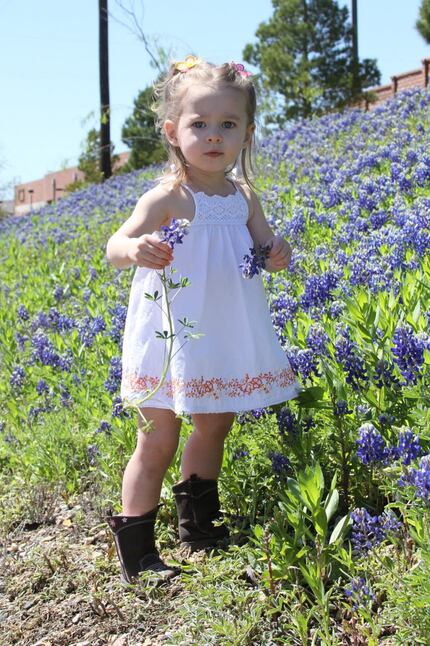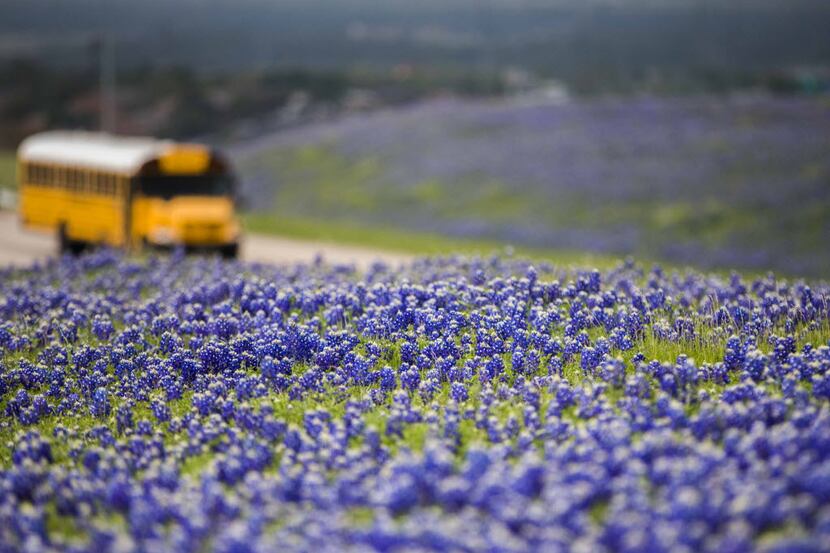It's springtime in Texas, which means a time-honored tradition for wildflower lovers everywhere.
You know the drill: Carefully wade into a patch of bluebonnets and squat down for a photo, but don't crush or pick them. It's against the law, right?
It's one of those urban legends that sounds just Texan enough to be real. Everyone "knows" the Legislature has protected the state flower by making it a crime to damage it.
But here's the thing, there's no law on Texas books making it illegal to pick bluebonnets.
But don't go planning a flower-picking party just yet. It may not be illegal to destroy the state flower, but it's almost certainly bad Texas karma.
"There's a number of myths about our native plants, and that's just one," said Joe Marcus, a program manager at the Lady Bird Johnson Wildflower Center in Austin, who knows well how we're drawn to capture the springtime sight.
"It's a birthright in Texas to put your baby's rear end on a bluebonnet and take a picture. I'm only half-joking about that."
Gina Rokas, tourism director for the city of Ennis, laughs when she hears the anti-picking myth. Ennis is the Official Bluebonnet City of Texas and brings in thousands of tourists for the annual Bluebonnet Trails Festival, which this year is April 15-17.
"We do hear that a lot," she said, especially among folks from outside the state. "It's really sweet when they ask, 'Can I just pick one because they're so beautiful.'"
This is the 65th year for the Ennis festival, Rokas said, but it's really taken off in the last 10 years since the advent of social media. Go to Ellis County during peak-bloom (best estimates say second week of April this year, Rokas said) and you'll find bumper-to-bumper traffic along the trails as people try to get their perfect portrait.
Rokas said she jokes with visitors who ask about picking the flowers, but she hopes people won't actually go through with it.
"We just say if everybody's picking them, they won't go back to seed," Rokas said. "It gives us an opportunity to tell them not to trespass onto private property."
Sgt. Lonny Haschel, a spokesman for the Texas Department of Public Safety, said that while actually picking the wildflowers isn't a crime, it's important to be safe while setting up for photos.
The grassy area near a busy highway might offer a pretty backdrop, but make sure to pull completely off the roadway before getting out for photos.
"Obviously in the Metroplex, you wouldn't stop along 635 anywhere," he said. "You want to make sure people are safe."
Haschel also said to avoid private property, because picking bluebonnets may not be a crime, but trespassing sure is. Parents should keep an eye out for other dangers in wildflower patches as well.
"Be careful with kids, because Texas is known for bluebonnets and fire ants," Haschel said. "Once you're there, scout out what's under the flowers."

Marcus suggests finding a (safe) roadside slope, where photographers can arrange the picturesque patchwork of blue and green behind their subjects without wading into the patch.
"People are looking for the perfect picture, the perfect angle, and they end up destroying what they try to appreciate," Marcus said.
Our statewide obsession with these little blue wildflowers dates back over a century, Marcus said. The state legislature first considered picking a state flower in the spring of 1901, spurring fierce floor debate.
Some lawmakers considered the cotton boll, harkening back to the state's Southern, cotton plantation roots. A representative from Uvalde suggested the cactus for its hardiness and beautiful flowers, earning him the nickname "Cactus Jack."
In the end, the Sandyland Bluebonnet of South Texas — which blooms taller and earlier than its North Texas cousin — won the honor. It wasn't until the 1970s that the legislature named all five or six species of Texas lupines as the state symbol.
Today, Marcus gets messages from all over the country from Tex-pats hoping to grow bluebonnets out-of-state. He's even gotten emails from military service members in Iraq and Afghanistan hoping to bring a little slice of Texas to the Eastern Hemisphere.

